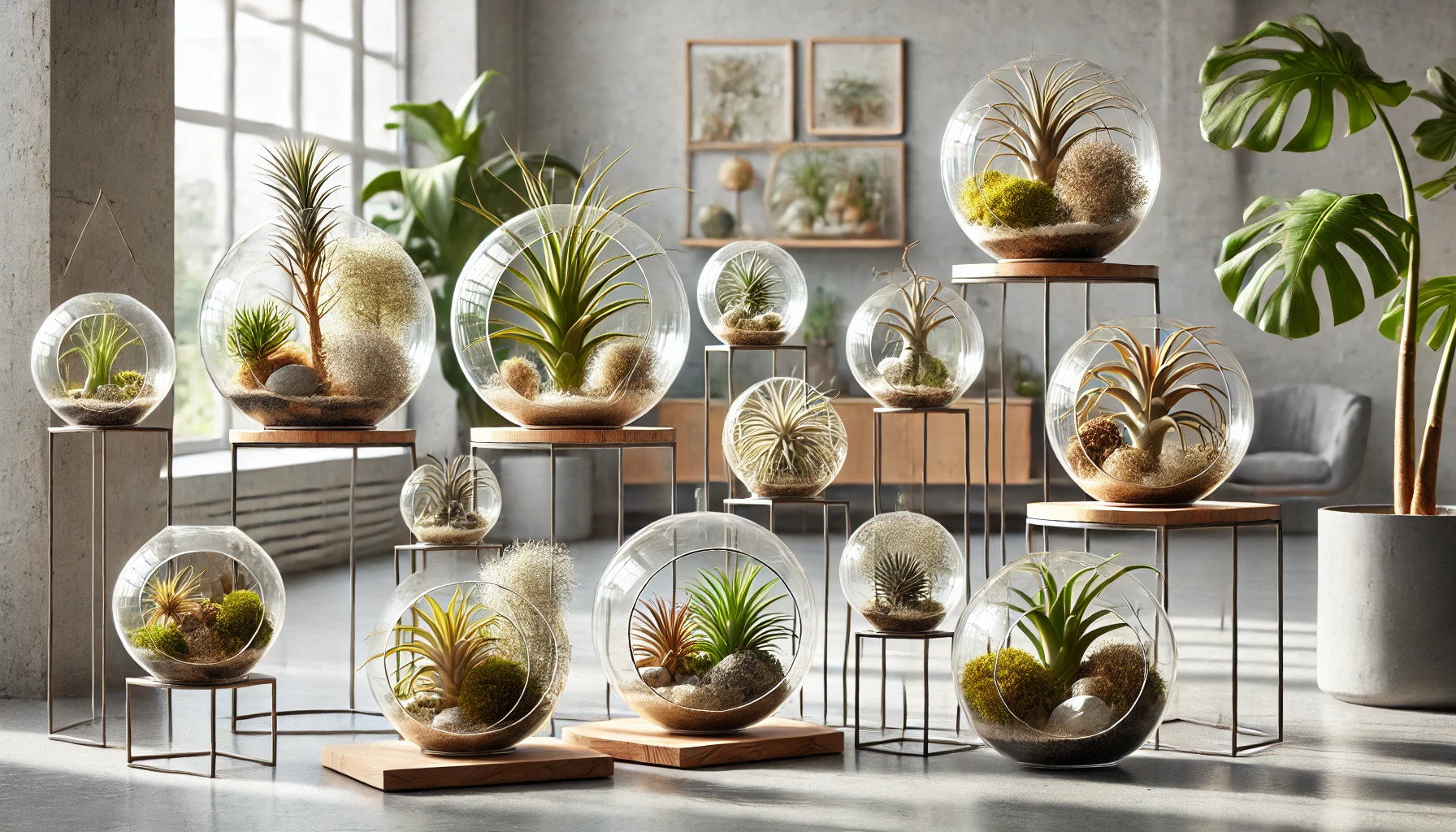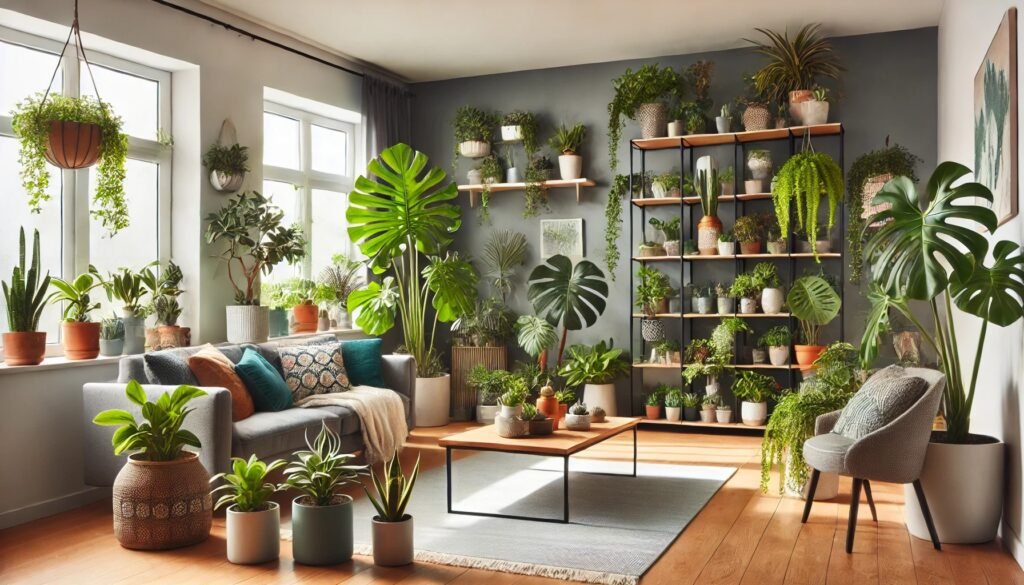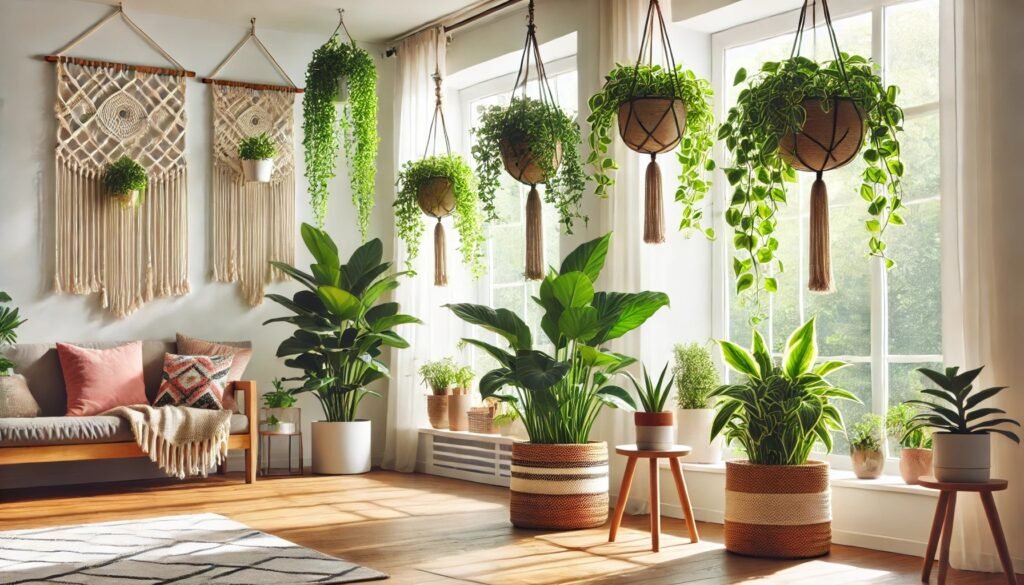
Air plants, also known as Tillandsia, are some of the most unique and fascinating plants you can bring into your home. Unlike most plants, they don’t need soil to thrive. Instead, they absorb water and nutrients through their leaves, making them incredibly versatile when it comes to creative displays. Whether you want to hang them, mount them on walls, or showcase them in glass terrariums, air plants are sure to add a touch of whimsy to your décor.
In this guide, we’ll explore the world of air plants, offering creative display ideas and simple care tips. These low-maintenance wonders are perfect for plant enthusiasts of all skill levels.
What Makes Air Plants Unique?
Air plants belong to the bromeliad family, which also includes the pineapple. They’re native to forests, mountains, and deserts of Central and South America, where they grow in trees, rocks, and even on the ground. Their ability to thrive without soil makes them an epiphytic plant, meaning they rely on surfaces like tree branches or rocks for support, not nutrients.
Absorbing Nutrients and Water
The most fascinating feature of air plants is how they absorb nutrients and water. Instead of using roots to take up food and moisture from soil, air plants rely on tiny scales on their leaves called trichomes. These trichomes trap water and nutrients from the air, allowing the plant to sustain itself without the need for soil.
Creative Display Ideas for Air Plants
One of the most exciting things about air plants is their versatility. Since they don’t need soil, you can display them in a wide range of creative ways. Here are a few ideas to inspire you:
Hanging Displays
Air plants look stunning when suspended in mid-air. You can use clear fishing line to hang them from the ceiling, creating the illusion that they’re floating. Alternatively, place them in glass globes or wire holders to add an ethereal feel to your space. Hanging them in front of a window gives them plenty of light while creating a visually striking display.
Wall Art

Turn your air plants into living art by mounting them on driftwood, cork bark, or even a piece of slate. Arrange them in geometric patterns, or mix and match sizes for an organic, freeform look. Because air plants are so light, they can be attached with non-toxic glue or tied gently to the display piece with string.
Terrariums and Tabletop Displays
If you prefer something more grounded, air plants look lovely in glass terrariums or shallow bowls. Add decorative elements like stones, moss, or shells to create a miniature landscape. Just be sure to keep the terrarium open to allow good airflow—air plants need fresh air to thrive.
Caring for Your Air Plants
While air plants are known for being low-maintenance, they still need some care to stay healthy and vibrant. Here are a few simple tips to keep your air plants thriving.
Watering and Humidity
Despite their name, air plants do need water. In their natural environment, they rely on rain and humidity to stay hydrated. In your home, you’ll need to mimic this by misting them regularly or soaking them in water.
- Misting: Lightly mist your air plants with water two or three times a week. This works well if you live in a humid environment.
- Soaking: For drier environments, soak your air plants in a bowl of water for 20-30 minutes once a week. After soaking, shake off excess water and let them dry upside down to prevent water from pooling in the leaves, which can cause rot.
Light and Temperature
Air plants thrive in bright, indirect light. Place them near a window where they can receive filtered sunlight for most of the day. Avoid direct sunlight, as it can scorch their delicate leaves.
Temperature-wise, air plants are fairly adaptable. They do well in a range of temperatures, ideally between 50°F and 90°F (10°C to 32°C). Keep them away from cold drafts or hot vents to avoid stress.
Air Circulation
As their name suggests, air plants need good airflow to stay healthy. Make sure they’re placed in well-ventilated areas, especially after watering. Stagnant air can lead to mold or mildew growth, which can harm your plant.
Fertilizing Air Plants
While air plants don’t need fertilizer to survive, feeding them occasionally can encourage growth and brighter blooms. Use a water-soluble fertilizer designed for bromeliads or orchids, diluted to half strength. Apply the fertilizer once a month during the growing season, usually from spring to early fall.
Avoid over-fertilizing, as too much can damage the plant. Less is definitely more when it comes to feeding air plants.
Common Problems and Solutions
Even though air plants are low-maintenance, they can encounter a few issues. Here’s how to troubleshoot common problems:
Dry or Crispy Leaves
If your air plant’s leaves are looking dry or crispy, it’s a sign of dehydration. Increase the frequency of misting or soaking. Make sure the plant dries out fully after watering, as moisture buildup can lead to rot.
Leaf Rot
Leaf rot occurs when water sits in the base of the leaves for too long. This is most likely to happen if the plant doesn’t dry out properly after soaking. Always shake off excess water and place the plant upside down in a well-ventilated spot after watering.
Yellowing or Browning Tips
Yellowing or browning leaf tips can be caused by too much direct sunlight or over-fertilizing. Move the plant to a spot with indirect light and reduce fertilizer use.
Pruning and Maintenance
Air plants don’t require pruning, but you can remove any dead or damaged leaves to keep them looking their best. Gently pull off any leaves that have dried out, and trim away any browning tips with clean scissors.
If your air plant blooms, enjoy the vibrant colors! After the bloom fades, you can cut off the spent flower stalk to encourage new growth.
Propagation and Pups
One of the most exciting parts of owning air plants is their ability to produce “pups,” or baby plants. After blooming, air plants will start to produce these offshoots, which can be left attached to the mother plant or separated once they’re about half the size of the original plant.
To propagate pups, gently twist them off the mother plant and place them in their own display. With proper care, these new plants will grow and eventually produce pups of their own!
Final Thoughts
Air plants are an incredible addition to any home, offering both beauty and versatility. Whether you’re hanging them in the air, mounting them on walls, or displaying them in glass terrariums, their soil-free nature gives you endless creative possibilities. With just a bit of care—like regular misting, bright light, and good airflow—these unique plants will thrive and bring joy to your space for years to come. If you’re looking for a low-maintenance plant that offers endless display options, air plants are the perfect choice.
Stay connected with the world of plants! Subscribe to Phylofy for expert gardening tips, DIY projects, and eco-friendly inspiration. Join our community and nurture your love for nature. Don’t miss exclusive content and updates. Subscribe now!



